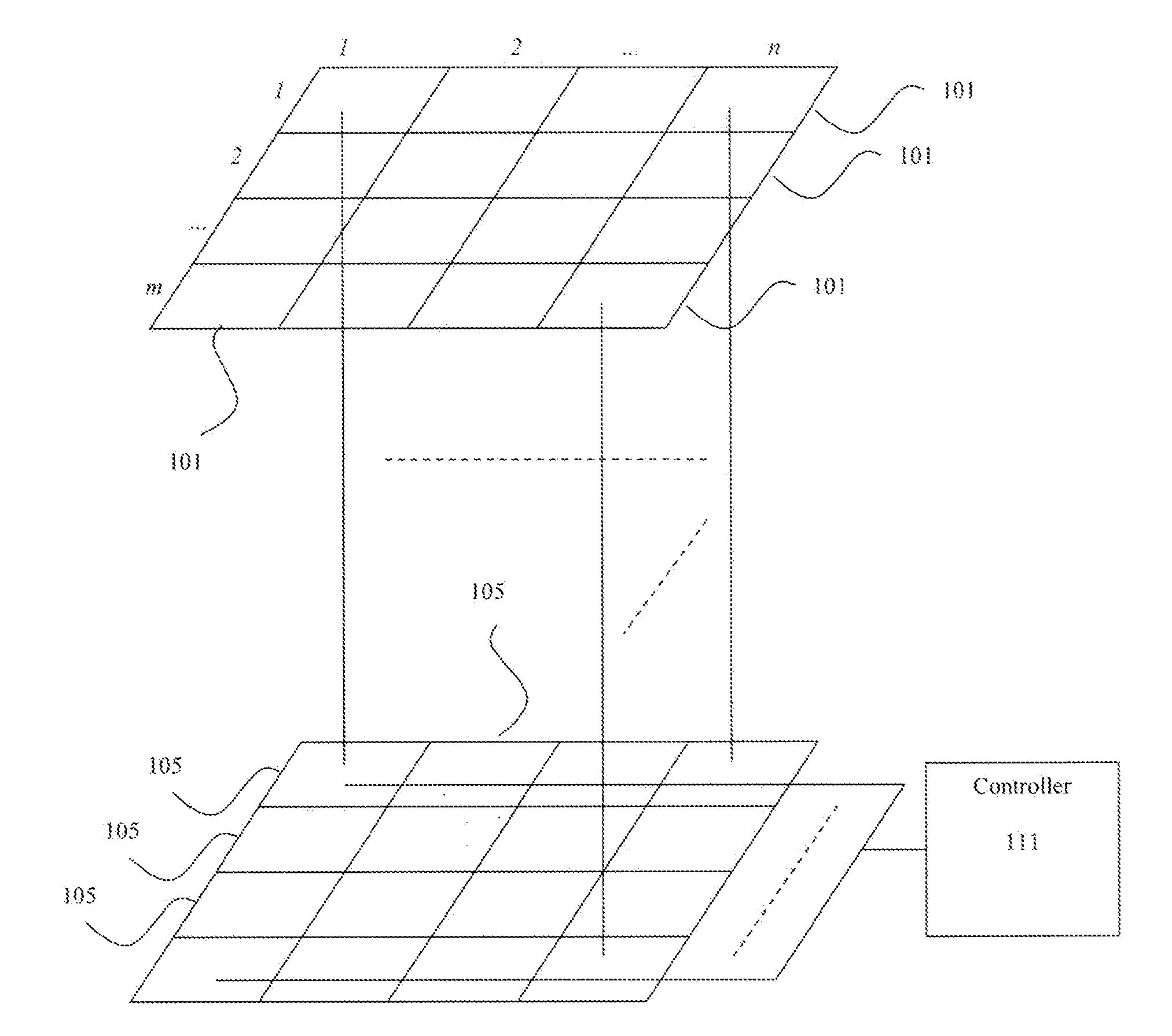Reconfigurable Photovoltaic Structure
- Summary
- Abstract
- Description
- Claims
- Application Information
AI Technical Summary
Benefits of technology
Problems solved by technology
Method used
Image
Examples
Embodiment Construction
[0053]The present invention provides a reconfigurable PV structure. The reconfigurable PV structure can be used to reduce mismatch. Mismatch can, for example, be caused by partial shading loss. The invention can reduce mismatch in the PV structure due to both predictable and unpredictable sources. It can also be used to locate or isolate faults in the PV structure and reduce the effects of these faults.
[0054]A PV structure as described herein comprises a plurality of PV elements. The PV elements could be PV cells, PV modules, PV panels, PV arrays, PV farm fields, PV farms, or any combination thereof.
[0055]Referring therefore to FIGS. 1 to 4, a reconfigurable PV structure in accordance with the present invention comprises a plurality of PV elements 101 physically arranged in m rows and n columns. m+1 electrical conductors 103, such as wires or PCB traces for example, are provided for the m rows but it is not necessarily the case that PV elements physically arranged in a particular ro...
PUM
 Login to View More
Login to View More Abstract
Description
Claims
Application Information
 Login to View More
Login to View More - R&D
- Intellectual Property
- Life Sciences
- Materials
- Tech Scout
- Unparalleled Data Quality
- Higher Quality Content
- 60% Fewer Hallucinations
Browse by: Latest US Patents, China's latest patents, Technical Efficacy Thesaurus, Application Domain, Technology Topic, Popular Technical Reports.
© 2025 PatSnap. All rights reserved.Legal|Privacy policy|Modern Slavery Act Transparency Statement|Sitemap|About US| Contact US: help@patsnap.com



